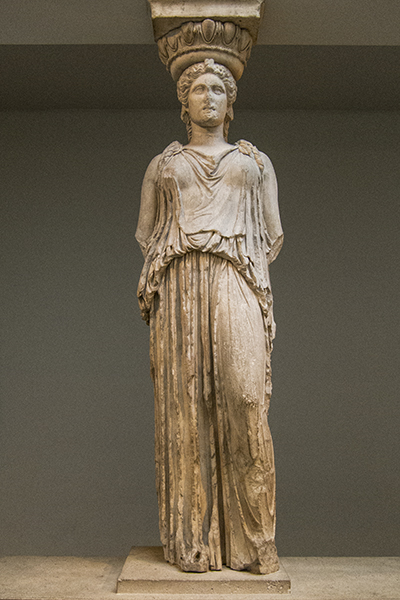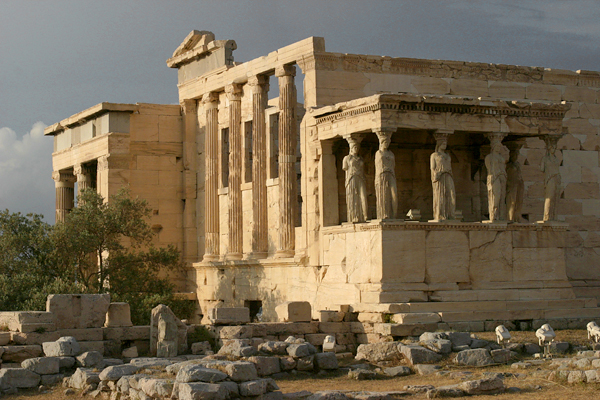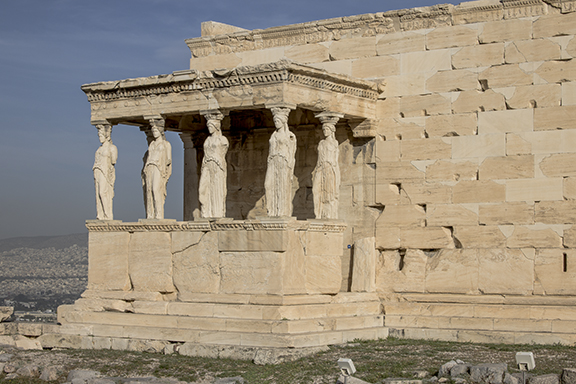
On the high stylobate of the south porch of the Erechtheion are six maidens, who take the place of columns in supporting the entablature. Now severely weathered and affected by pollution, five of the caryatids were removed to the Acropolis Museum in 1978 and replaced with replicas. The other figure (the second from the left in the front row of four) was appropriated by Lord Elgin who, between 1801 and 1805, removed about half of the surviving sculptures from the fallen ruins of the Acropolis and from the Parthenon, itself. They were acquired by the British Museum in 1816 and put on public display the following year. Between 1937 and 1938, even the British caryatid, which certainly is in better condition than its sisters, was damaged when masons abraded the surface (as well as that of some of the Parthenon sculptures) in a misguided and unauthorized attempt to brighten them for the opening of the new gallery in which they were to be displayed..

"Should any one wish for information on the origin of those draped matronal figures crowned with a mutulus and cornice, called Caryatides, he will explain it by the following history. Carya, a city of Peloponnesus, joined the Persians in their war against the Greeks. These in return for the treachery, after having freed themselves by a most glorious victory from the intended Persian yoke, unanimously resolved to levy war against the Caryans. Carya was, in consequence, taken and destroyed, its male population extinguished, and its matrons carried into slavery. That these circumstances might be better remembered, and the nature of the triumph perpetuated, the victors represented them draped, and apparently suffering under the burthen with which they were loaded, to expiate the crime of their native city. Thus, in their edifices, did the antient architects, by the use of these statues, hand down to posterity a memorial of the crime of the Caryans."
Vitruvius, De Architectura (I.1.5)
Caryatids are female figures that serve as the architectural support for the entablature of a building. The Greeks called these supporting figures korai, maidens. Caryatides is the first use of the term in Latin and transliterates the Greek word meaning "maidens of Caryae." Rather than commemorating the disgrace of Caryae, the figures more likely represent the young women of the town where, says Pausanias, there was a sanctuary of Artemis Caryatis ("Artemis of the Walnut Tree") and an image of the goddess standing in the open air. Here, she was celebrated every year by choral and traditional native dances (Description of Greece, III.10.7). He also relates that Aristomenes, king of Messenia, waiting for the maidens to dance, once carried off those of wealthiest and most noble birth. They later were released (after almost having been raped by the soldiers ordered to guard them) for a large ransom (IV.16.9–10).

In the Eighteenth Century, when Elgin was in Athens, the Erechtheion served as the residence of the Disdar, the military commander of the Acropolis, who exacted exorbitant fees for those travelers and artists who wanted access to the citadel.
Reference: Lord Elgin and the Marbles (1998) by William St. Clair.